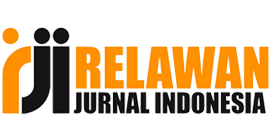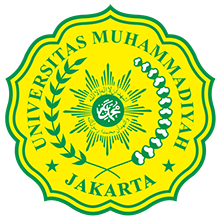ANALISIS PENGGUNAAN TEKNOLOGI PESAWAT TANPA AWAK DALAM MENDUKUNG OPERASI PENGAMANAN DI WILAYAH PERBATASAN DARAT RI-RDTL
Abstract
Indonesia is an archipelagic state that has land and sea boundaries with other countries. One of the land border areas of the Republic of Indonesia (RI) is the Democratic Republic of Timor Leste (RDTL). In order to protect the RI-RDTL land border area, the Indonesian Armed Forces (TNI) has deployed the RI-RDTL Border Security Task Force. The border security system implemented by the RI-RDTL Border Security Task Force has not been able to fully monitor the border area as a whole, so violations often occur in the RI-RDTL land border area that are not monitored. In order for the RI-RDTL Border Security Task Force to be more effective in carrying out its duties in protecting the RI-RDTL land border area, it needs to be equipped with Unmanned Aerial Vehicle (UAV) technology. The purpose of this study was to analyze the effectiveness of the use of UAV technology in supporting security operations in the RI-RDTL land border area with the measured effectiveness indicators covering aspects of Reliability, Adaptability, Sustainability, Interoperability, Risk, Cost, Time and Human. This research uses Mixed Methods with Concurrent Embedded methods. Qualitative data were processed using NVivo 12 Plus software and analyzed using descriptive analytical methods. While quantitative data is processed using SPSS 26 software and Measures of Effectiveness (MoE). The results of this research conclude that UAV technology is effectively used to support security operations in the RI-RDTL land border area with a final effectiveness value of 0.829 for all UAV effectiveness indicators that have been determined.
Keywords
Full Text:
PDFReferences
Ahmad, J. 2018. Revolution in Military Affairs. https://www.dictio.id/t/apa-yang-dimaksud-dengan-revolution-in-military-affairs/6302. (diakses pada tanggal 1 Maret 2020 pukul 14.39 WIB).
Austin, Reg. 2010. Unmanned Air Systems UAV Design, Development and Deployment, John Wiley and Sons, Inc.
Blazakis, J. 2004. Border Security and Unmanned Aerial Vehicle, Analyst in Social Legislation Domestic Social Policy Division.
Novia, F., Sutopo, P. N. dan Arwin, D.W.S. 2016. Efektivitas Pemanfaatan Wahana Tanpa Awak dalam Peliputan dan Penanganan Bencana. Tesis Pasca Sarjana. Jakarta: Universitas Pertahanan. https://www.researchgate.net/profile/Arwin_Sumari/publication/330347931.
Rita, G., Eldado, K.P., Miaka, A.S. dan Hamzah, U.M. 2020. Pengembangan Unmanned Aerial Vehicle (UAV) melalui Pengaplikasian Jaringan 5G. Jurnal Inovasi dan Optimalisasi Teknologi di Bidang Maritim untuk mewujudkan Indonesia Emas 01, no. 1. https://journal.ittelkom-by.ac.id/lkti/article/view/26.
Holton, A. E., Lawson, S. dan Love, C. 2015. Unmanned Aerial Vehicles Opportunities, Barriers, and The Future of “Drone Journalism”. Journal of Journalism Practice, 9 (5). 634-650.
Kodam IX/Udayana. 2019. Laporan Evaluasi Pelaksanaan Operasi Pamtas RI-RDTL TA 2019 Kodam IX/Udayana Periode 1 Januari s.d. 31 Desember 2016 s.d. 2019.
Sondang., P.S. 2002. Kiat Meningkatkan Produktivitas Kerja. Jakarta: PT Rineka Cipta, 2002.
Firmandes, P., Syaiful, A. dan Tatar, B. 2017. Penggunaan Sistem Unmanned Aerial Vehicle (UAV) dalam Pengamanan Wilayah Perbatasan Indonesia-Malaysia. Jurnal Strategi Pertahanan Udara 3, No. 2 (2017). http://139.255.245.7/index.php/SPU/article/view/103.
Smith, N. and Clark, T. 2006. A Framework to Model and Measure System Effectiveness”. ICCRTS, Cambridge.
Sugiyono. 2014. Metode Penelitian Kuantitatif, Kualitatif, dan R&D. Bandung: Alfa Beta.
Tremayne, M. and Clark, A. 2014. New Perspective From The Sky Unmanned Aerial Vehicles And Journalism. Journal of digital journalism, 2 (2). 232-246.
Undang-Undang No. 34 Tahun 2004 tentang Tentara Nasional Indonesia Pasal 7 ayat (1).
DOI: https://doi.org/10.24853/jurtek.14.1.1-12
Refbacks
- There are currently no refbacks.





















